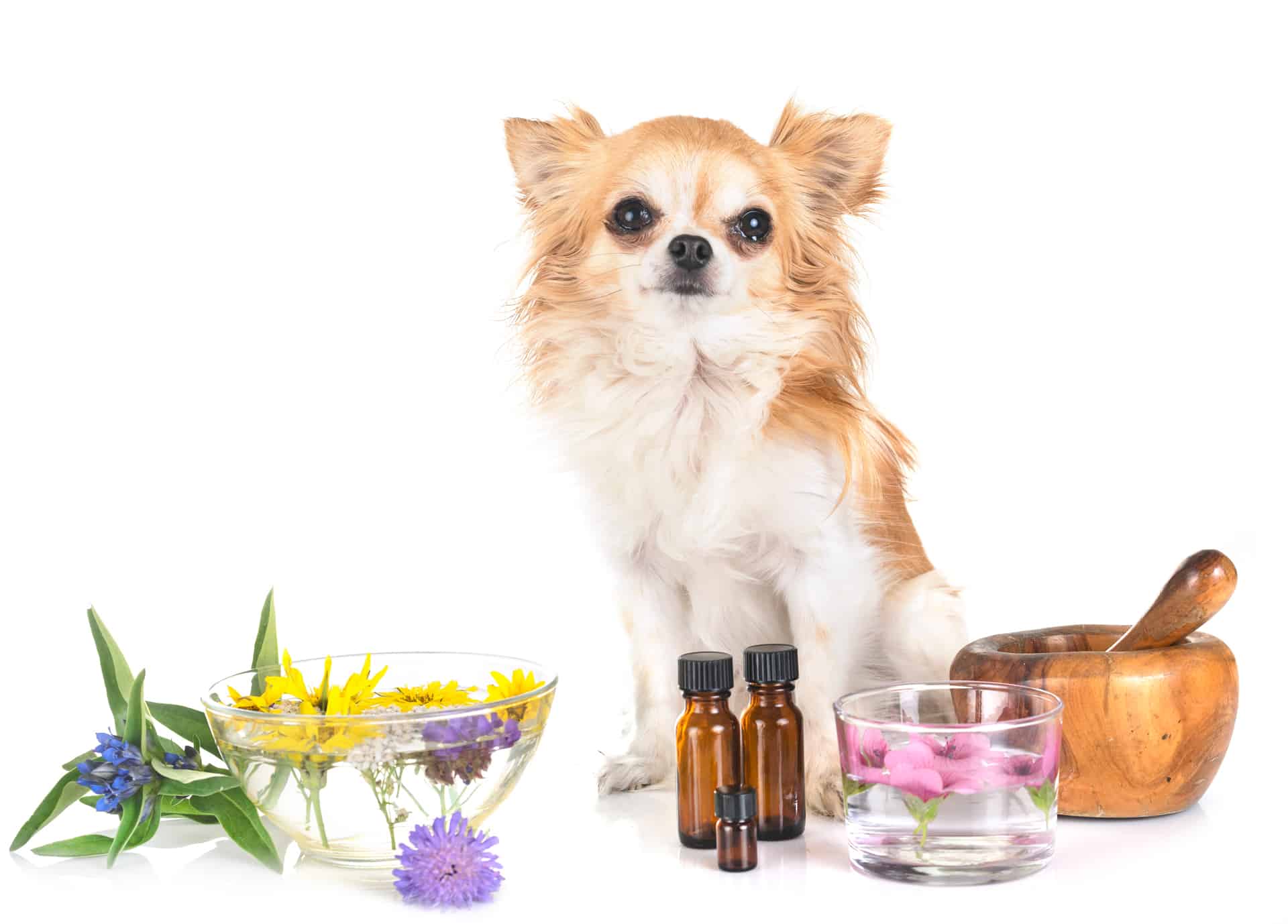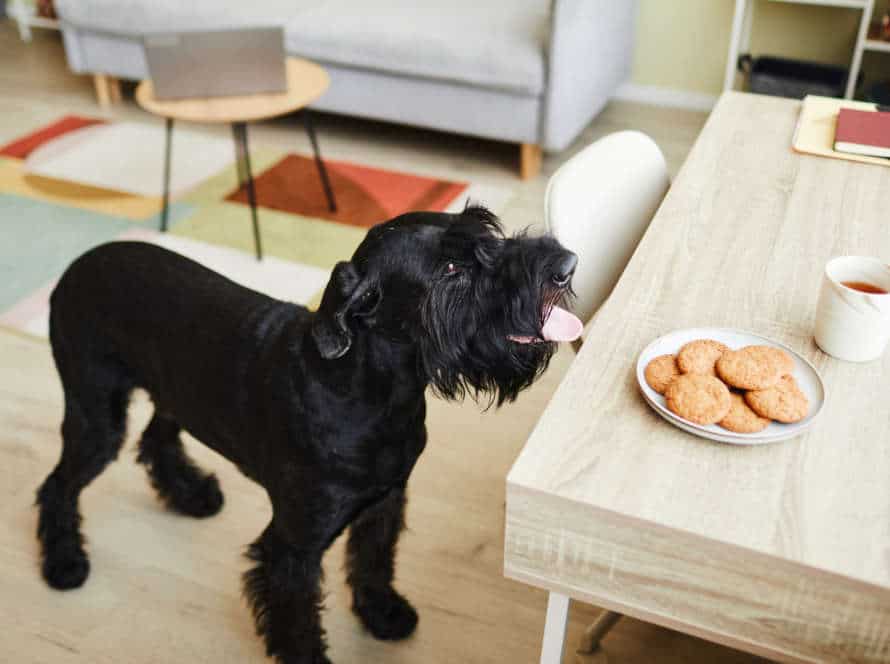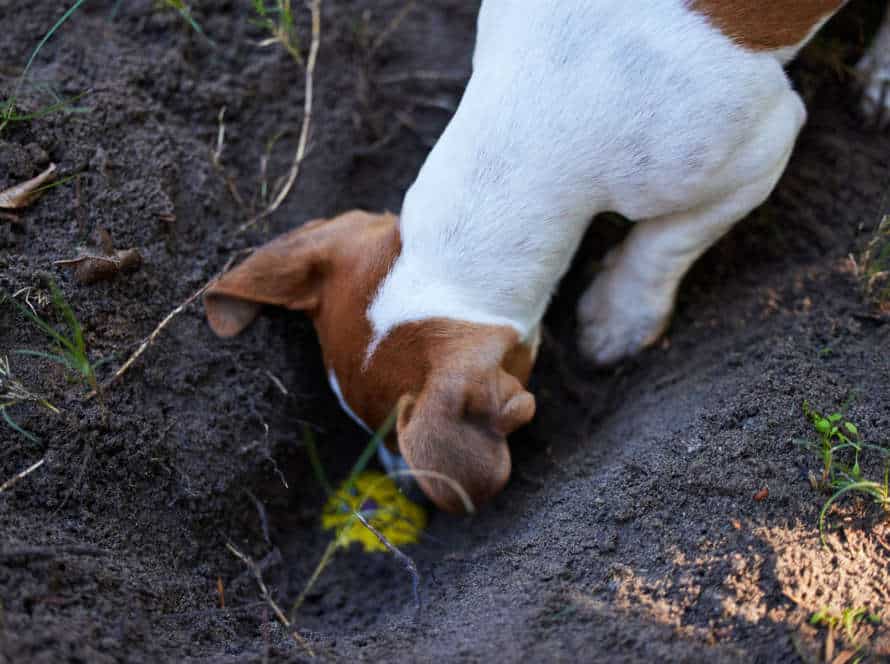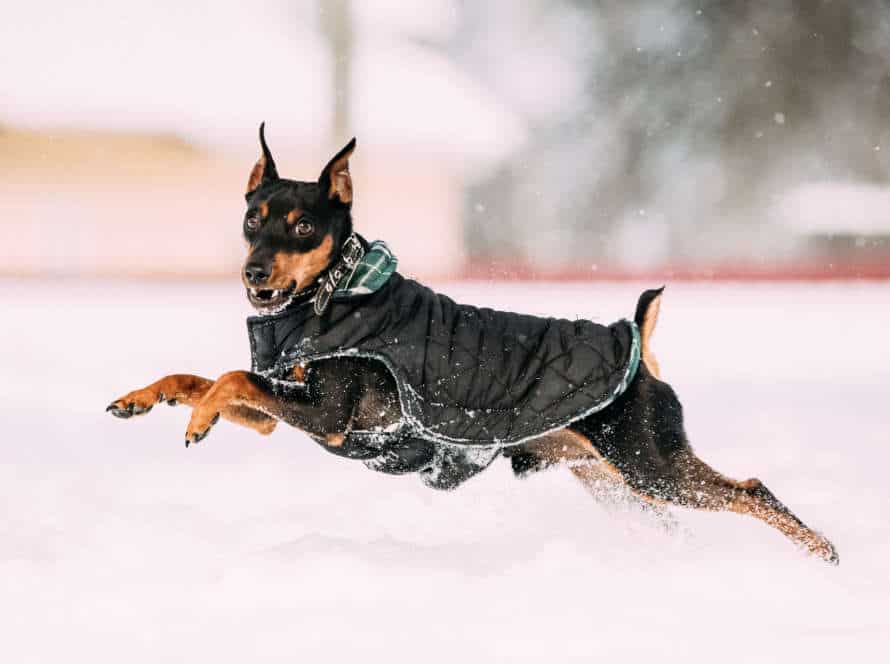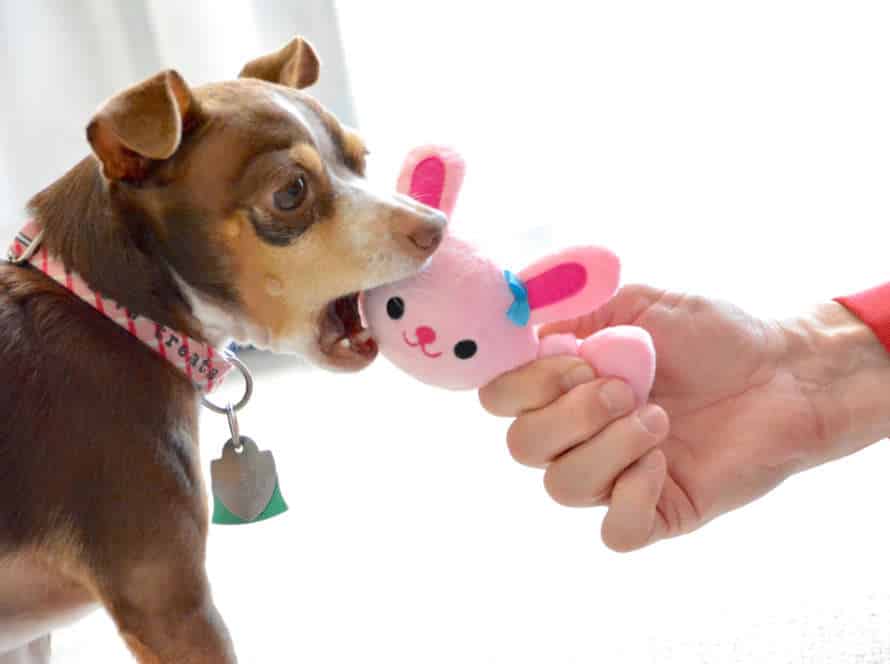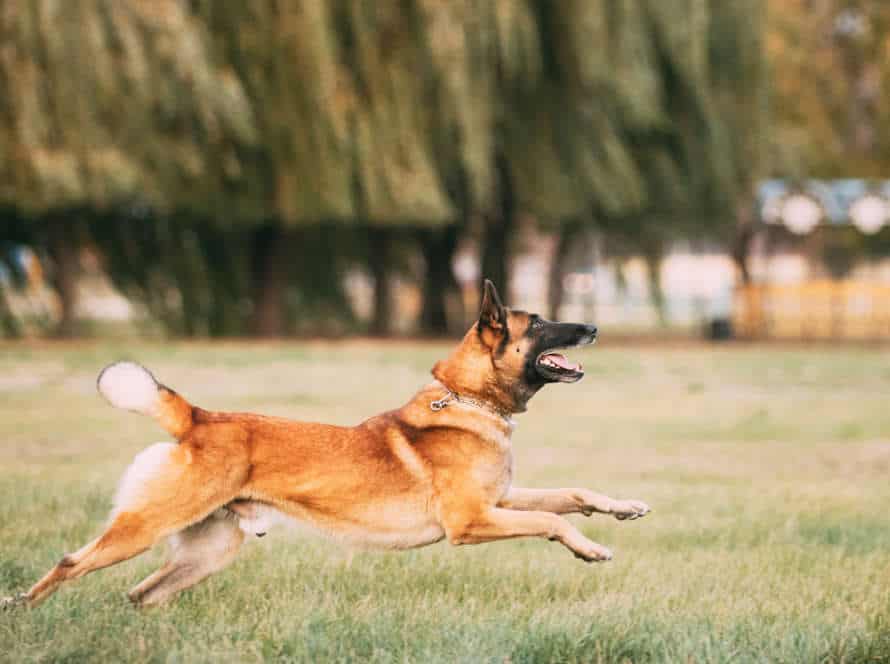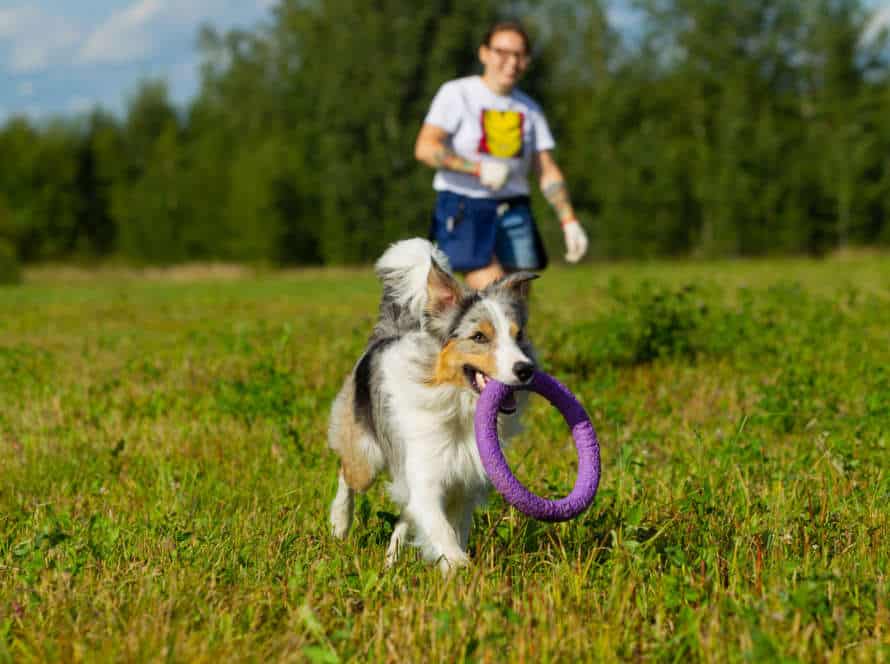Aromatherapy for Dogs: Scents to Soothe Anxiety
Dogs can benefit from aromatherapy to reduce anxiety and make them feel calmer. Here are a few scents that can help with this:
- Lavender – This is a popular calming scent for dogs and can help with stress, anxiety and fear. It also encourages better sleep.
- Chamomile – Another good choice for calming anxious dogs.
- Bergamot – Uplifting and relieves stress.
- Rosemary – Stimulates the nervous system.
- Peppermint – Eases nausea, vomiting and motion sickness.
When using aromatherapy, make sure to use high-quality essential oils and always dilute them. Too much of any scent can be overwhelming for your dog.
Understanding Aromatherapy for Dogs
Aromatherapy for dogs is becoming trendy. Essential oils or scent-based choices could help soothe an anxious pup. Before trying it, it’s important to understand the science and benefits. Let’s learn about aromatherapy for dogs. It’s an alternate treatment for calming dogs with anxiety. It’s natural and can be effective.
How Aromatherapy Works for Dogs
Aromatherapy can be beneficial for your four-legged friend! It can calm anxiety, reduce aches and pains, and promote wellbeing. Here’s how it works: Aromatherapy uses essential oils from plants. These oils can be used topically, ingested, or inhaled by your pup.
Scents like lavender, chamomile, and peppermint are known to help with anxiety. Lavender has a calming effect and can ease stress. Chamomile is known for its relaxing properties. Peppermint is great for nausea and respiratory problems.
Pro tip: When using aromatherapy for dogs, dilute the essential oils with a carrier oil like coconut, jojoba, or almond oil. Never apply oils directly to their skin or fur.
Benefits of Aromatherapy for Dogs
Aromatherapy with essential oils can help dogs in many ways. To use it safely and effectively, it’s important to know how it works and which scents are safe.
- Lavender: A calming scent which reduces anxiety and promotes relaxation.
- Chamomile: Soothes the nervous system, relieving stress and anxiety.
- Bergamot: Eases depression and reduces stress and anxiety.
- Peppermint: Has anti-nausea properties and can help motion sickness during car rides.
Pro tip: Always dilute the oils before using them on your pet. Start off slowly, to avoid overwhelming them with new scents.
Risks and Precautions for Using Aromatherapy on Dogs
Aromatherapy can be beneficial for dogs, but there are risks involved in using it. Oils such as tea tree, pennyroyal, and wintergreen should never be used. Peppermint, clove, cinnamon, and thyme can cause irritation and allergic reactions. To ensure safety, always dilute the oils and use a diffuser or spray. Start with small amounts to monitor reactions. Dogs with medical conditions should avoid aromatherapy. Always consult a vet first and don’t use it as a substitution for professional care.
Best Scents for Dog Anxiety
Pet owners have discovered aromatherapy can help anxious dogs. Aromatherapy is a form of treatment which utilizes essential oils. These oils have a calming effect, helping to reduce stress and anxiety in dogs. We’ll talk about the best scents for dogs with anxiety and how to use them safely.
Chamomile: The Calming Scent
Chamomile is known for its calming and soothing effects, making it perfect for dog anxiety relief through aromatherapy. It relaxes the nervous system and encourages deep relaxation.
A few ways to use chamomile to soothe your anxious pup include:
- Chamomile Tea: Brew a pot and let it cool. Then, spritz your dog’s bed or blankets with the tea. Give your dog some sips, too!
- Chamomile Essential Oil: Add a few drops of oil to a diffuser or carrier oil, like coconut oil. Rub it onto your dog’s bed or blankets, but not directly onto their skin.
- Chamomile Scented Candles: Light a candle in the room where your pup spends most of their time. The chamomile scent will help promote relaxation.
Pro Tip: Always consult with your vet before using any new aromatherapy treatment for your dog.
Lavender: The All-Around Soother
Lavender oil is a great soother and perfect for soothing dog anxiety with aromatherapy. It can help in many ways!
The American Kennel Club did a study and found that dogs exposed to lavender oil had lower heart and respiratory rates. This means they felt relaxed.
You can use this oil in several ways. Mix it with a carrier oil and rub it on your dog’s fur. Or, use a diffuser to spread the scent in the air. You can even add it to a spray bottle and use it as a mist.
It can also help soothe skin irritations and itching. Lavender oil is a multi-purpose oil for your furry friend!
Valerian: The Sleep Aid
Valerian has been used for centuries to help with calming and relaxing. It’s a popular sleep aid. In various forms like tea, capsules or extract, you can consume it. This herb boosts gamma-aminobutyric acid (GABA) production in the brain. This helps with anxiety and sleep.
For anxious dogs, aromatherapy is also a natural way to soothe. Here are some of the best scents:
- Lavender – for its calming effects. It promotes better sleep.
- Chamomile – to reduce stress and anxiety, e.g. for car rides or vet visits.
- Frankincense – has a soothing effect, useful for dogs with separation anxiety.
- Clary Sage – calms the nervous system. Reduces anxiety during stressful times.
You can use these scents as essential oils, sprays, or diffusers. It creates a relaxing environment for your furry friend.
Ylang-Ylang: The Stress Reliever
Ylang-Ylang is a great scent for calming dogs and humans down. It comes from a tree from the Philippines and smells sweet and floral.
To use Ylang-Ylang for your pup’s anxiety, mix some of the essential oil with a carrier oil, like coconut or olive oil.
Apply the mixture to your dog’s collar or bandana, without touching their skin.
Let the scented collar or bandana stay on for a few hours.
You can also use Ylang-Ylang in a diffuser to spread the scent around your home.
Other good scents for anxious dogs are lavender, chamomile, and frankincense.
How to Use Aromatherapy for Dogs
Aromatherapy is a natural way to soothe canine anxiety and stress. It’s a non-invasive practice that uses essential oils for reducing stress. This is a powerful technique for providing solace to anxious or tense dogs.
Here are several tips on how to use aromatherapy for dogs, and the various aromas you can employ:
Diffusing Essential Oils
Diffusing essential oils is a great way to use aromatherapy on your furry friends and soothe their anxiousness. But, not all oils are safe. Some may be helpful while others can be toxic and cause harm. Here are some tips to get the most out of aromatherapy:
- Choose a safe oil, like lavender or chamomile, which are known to be calming.
- Use a high-quality diffuser with the directions given by the manufacturer.
- Start off with a low dilution of the oil and watch for any reactions from your dog, like sneezing, coughing or drooling excessively.
- Do not use essential oils around dogs with respiratory issues or pregnant or nursing dogs.
- Always ask your vet before using oils on your dog to make sure it is safe.
Pro Tip: Aromatherapy is beneficial for both your pup’s mental and physical health, but it should not take the place of any prescribed medication or treatment.
Topical Use of Essential Oils
Aromatherapy for dogs can be a great way to help soothe anxiety and promote relaxation. But, it’s essential to remember to always dilute essential oils before use. Here’s how to use aromatherapy for your pup:
- Choose a high-quality essential oil and mix it with a carrier oil like coconut, jojoba, or olive oil.
- Apply a small amount of the diluted oil on your palms and then rub them together.
- Gently massage the oil onto your dog’s fur, avoiding their face and eyes.
- Repeat as needed, but be careful not to overuse it, as it may cause sensitivities and adverse reactions.
Some soothing essential oils that may help include lavender, chamomile, bergamot, and ylang-ylang. Do your research and consult with a veterinarian before starting any aromatherapy treatment for your pup!
Making an Aromatherapy Spray or Mist
Creating an aromatherapy spray or mist is simple and helpful for lessening a dog’s anxiety. Steps to follow:
- Pick an essential oil or blend that’s safe for dogs. Eg. Lavender, chamomile, frankincense.
- Put 10-20 drops of the chosen oil in a spray bottle with water.
- Shake the bottle for even distribution.
- Spray the mist around your dog’s environment – like their bed, crate or collar.
- Don’t spray directly on their face or eyes.
- Use the mist to freshen their bed or blankets.
- Utilizing aromatherapy in your dog’s daily routine can reduce their anxiety and create a more peaceful atmosphere. Pro Tip: If unsure about which essential oils to use, ask a vet before using any.
Alternatives to Aromatherapy for Dog Anxiety
Aromatherapy is a popular way to soothe doggy anxiety. But there are other possibilities! Like exercising, distracting, and rewarding with treats. Let’s explore the alternatives to aromatherapy to reduce dog anxiety.
Exercise and Play
Exercise and play are great alternatives to aromatherapy for calming anxious dogs. Here are some ways to help your pet relax without using scents:
- Exercise – Take your pup on walks, play catch, or sign them up for obedience classes. This stimulates their body and mind, reducing stress.
- Playtime – Keep their mind sharp with games like hide and seek, tug-of-war, or dog sports.
- Socialization – Get your dog used to people and other animals in a controlled environment. This improves their social skills and lowers anxiety.
- Training – Teach them commands and tricks to help them relax in stressful situations.
- Remember – Each dog is different. Observe their behavior and preferences to find what works best for them.
Behavioral Training and Therapy
Behavioral training & therapy is an alternative to aromatherapy for treating dog anxiety. Its goal? Change a dog’s response to anxiety triggers & teach coping mechanisms. Common techniques include:
- Counter-conditioning: Replace anxiety-inducing stimuli with positive ones. Reward the dog with treats or praise when they hear a loud noise.
- Desensitization: Gradually expose the dog to their anxiety triggers in a safe & controlled manner until they become desensitized.
- Relaxation training: Teach dogs techniques to calm down & relax, such as deep breathing & muscle relaxation.
- Cognitive-behavioral therapy: Aims to change a dog’s thought patterns & emotions in response to anxiety triggers.
Aromatherapy for dogs may be soothing, but consider other options like behavioral training & therapy for long-term anxiety management.
Medications for Dog Anxiety
Managing dog anxiety? Aromatherapy is a popular natural choice, however, not all dogs may respond. Here are some medication options:
- Benadryl, an antihistamine. It has a sedative effect and can soothe dogs before vet visits.
- Prozac, an SSRI. It’s used for separation anxiety, aggression and other dog anxiety issues. Takes several weeks to work. Need vet prescription.
- Clomipramine, a tricyclic antidepressant. Treats separation anxiety, noise aversion and other anxiety-related issues. Again, prescription needed.
Aromatherapy may be an option, but consult a vet to determine the best course of action for your pup’s anxiety.
Tips for Using Aromatherapy on Dogs
Aromatherapy has been around for centuries, and now pet owners are catching on! Correctly used, aromatherapy can be great for calming down dogs and reducing their anxieties. If you’re thinking of using aromatherapy for your pup, here are some helpful tips:
- Identify the source of your dog’s anxiety.
- Consider what type of aromatherapy might be best for your pup.
- Research the safety and efficacy of the essential oils you plan to use.
- Use a diffuser to disperse the oil throughout your home.
- Monitor your pup’s response to the aromatherapy.
Choose High-Quality Essential Oils
When using aromatherapy for dogs, it’s vital to pick high-quality essential oils. Not all oils are the same and some can even be toxic to pets. Here are some tips to help:
- Look for oils that are 100% pure and therapeutic-grade.
- Avoid oils with additives, synthetic fragrances, or alcohol.
- Select oils that are safe for topical use and inhalation, such as lavender, chamomile, and frankincense.
- Consult your vet before using any new oils on your dog, especially if they have an existing medical condition or are taking medicine.
By picking high-quality essential oils and using them safely, you can soothe your pup’s anxiety and make a calming environment for them.
Dilute Essential Oils Properly
Essential oils are a great, natural remedy. But too much can cause skin irritation or even toxicity in dogs. So, here are some tips for using aromatherapy safely and effectively on dogs:
- Choose high-quality, therapeutic-grade essential oils for use on dogs.
- Stick to dilution guidelines, usually 1 drop of essential oil to 50 drops of carrier oil.
- Lavender, frankincense, and chamomile can help with anxiety. Peppermint and ginger can tackle digestive issues.
- Avoid using essential oils around eyes, nose, and mouth. Test a small area of skin first.
- Pro tip: Before using essential oils on your dog, check with your vet, especially if your pup has medical conditions or sensitivities.
Test for Sensitivity and Allergies
Before using aromatherapy on your pup, it’s essential to check for allergies and sensitivity. Here’s how:
- Choose a mild oil, such as lavender or chamomile, and mix it with a carrier oil like coconut or olive oil.
- Apply a small amount of the diluted blend to a tiny area on your dog’s skin, e.g. the inner paw or ear flap.
- Wait 24-48 hours and monitor any adverse reactions, like redness, irritation, itching, or inflammation.
- If your pup shows signs of distress, stop using the oil right away and seek vet advice.
Pro tip: Start with a small amount and dilute oils properly to keep your furry friend safe.
Follow Proper Usage Instructions for Aromatherapy on Dogs
Aromatherapy can be great for dogs! Here are some tips to keep in mind:
- Dilute essential oils. They are powerful, so you must use a carrier oil like coconut or jojoba.
- Look for pet-specific blends to make sure the aromatherapy is safe.
- Avoid sensitive areas like ears, eyes, or nose. Try the back, stomach, or legs instead.
- Introduce the oils slowly. Observe your pet for any reactions before applying topically.
- Remember to check with your vet first!
Frequently Asked Questions
Q: What is aromatherapy for dogs?
A: Aromatherapy for dogs involves using scents to soothe anxiety and provide other health benefits for our furry friends.
Q: How does aromatherapy work for dogs?
A: When dogs inhale certain scents, the scent molecules travel to the dog’s brain and activate specific receptors, triggering a response in the body that can produce a calming effect.
Q: What scents are good for calming dogs?
A: Lavender, chamomile, bergamot, and ylang-ylang are all scents that can help soothe anxiety in dogs.
Q: How can I use aromatherapy on my dog?
A: There are a few ways to use aromatherapy on your dog, including using essential oils in a diffuser, applying diluted essential oils topically, or using a scented collar or bandana.
Q: Is aromatherapy safe for dogs?
A: While some essential oils can be harmful to dogs, many essential oils are safe when diluted and used properly. It’s important to do your research and consult with a veterinarian or a certified aromatherapist before using aromatherapy on your dog.
Q: Can aromatherapy help with other conditions besides anxiety?
A: Yes, aromatherapy can be used for other conditions such as skin irritations, respiratory issues, and digestive problems. However, it’s important to consult with a veterinarian or a certified aromatherapist before using essential oils to treat any health conditions in your dog.

